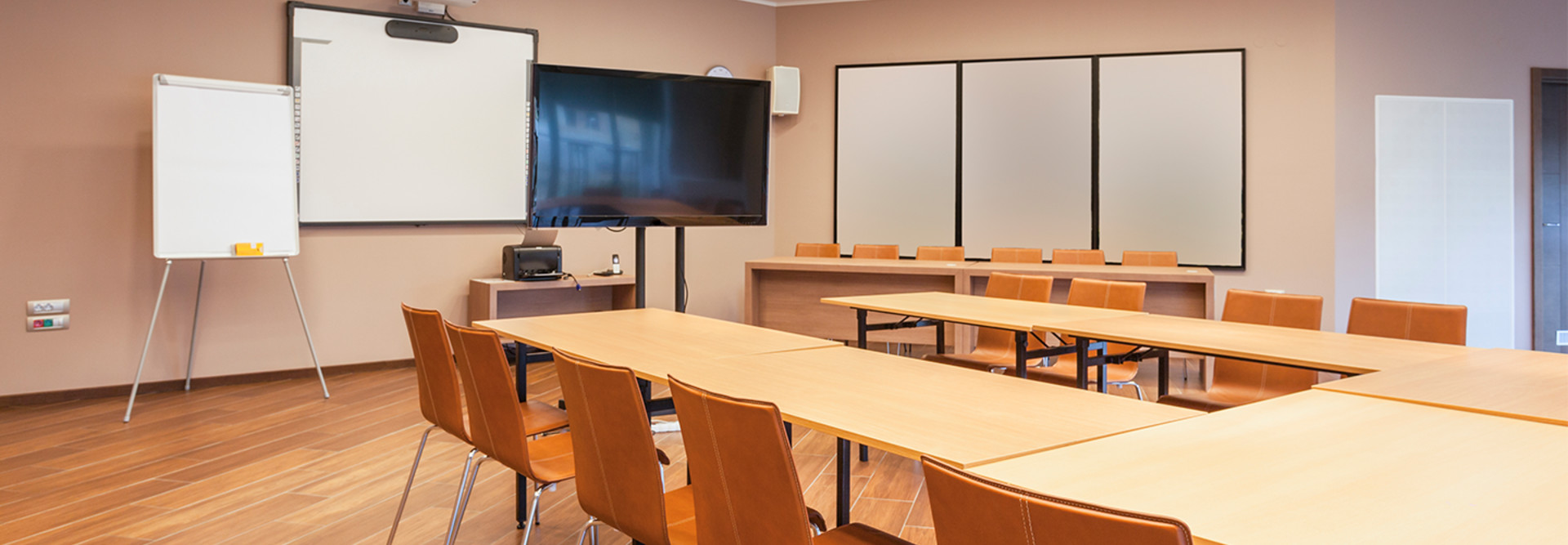Active-Learning Classrooms: 7 Tips for Higher Education
Universities are investing heavily to transform lecture-style classrooms into active-learning environments in order to boost student engagement and improve retention and recruitment rates.
Research from institutions such as Indiana University and Yale University finds that active-learning classroom environments can be beneficial for student outcomes, giving universities more reasons to consider active-learning strategies in their classroom design.
With the numbers to prove that active-learning classrooms are effective, universities are now pressed to find the best way to design innovative spaces.
While these innovative classrooms differ depending on the needs of the university, a recent CDW white paper outlines active-learning best practices all institutions can use.
1. Plan Classroom Design Across Silos
Designing an active-learning classroom is a collaborative effort. Students, faculty and staff will need to make the transition to a new space, whether it changes how individuals learn, teach or maintain the classroom design.
It is important to include representatives of each group when discussing the layout and execution of an active-learning classroom.
2. Eliminate the Front of the Classroom
A key element of an active-learning classroom design is the flexibility to mold an environment to fit students’ needs.
In a traditional, lecture-style learning environment, professors are tethered to the space behind their podiums and students to their tiered seats. Incorporating innovative classroom furniture such as flexible seating or collaborative round tables lets students and professors move around the space.
“Classroom layout can have a huge impact on instruction by simply changing traffic patterns and encouraging professors to circulate through the room, rather than standing at the front to deliver instruction,” according to the CDW white paper.
For larger lecture halls, this kind of design may not be possible. Instead, universities can use online collaboration tools such as Microsoft Teams to bring classroom activities into a digital environment, which can offer the kind of flexibility the physical classroom cannot.
MORE FROM EDTECH: Find out how universities can move from passive to active learning online.
3. Make Every Space an Active-Learning Space
While redesigning classrooms is important, isolating active learning to a specific room can be counterintuitive to the core principles of active-learning strategies.
“Active learning has to extend outside of the classroom,” Top Hat CEO Mike Silagadze tells EdTech. “It is not just what happens during the lecture, it’s also what happens before class and then after class.”
The first step to expanding active learning is providing a robust Wi-Fi network. When the University of Maryland constructed the Edward St. John Learning and Teaching Center, administrators installed 100 Cisco Aironet 3800 Series wireless access points.
These APs not only support the controllers and touch panels used in the classroom design, but also provide Wi-Fi to the cafes, hallways and public spaces within the building so that students can work wherever they feel comfortable.
4. Repurpose Existing Items in Active-Learning Classroom Design
Universities can also start by identifying existing infrastructure and spaces that could facilitate active learning.
For example, not every university needs to construct a new building from the ground up. At Indiana University Bloomington, administrators needed a space to house a new active-learning classroom that could accommodate larger groups. Instead of constructing a new facility, leaders realized they could repurpose a building that housed an old university swimming pool to fit their needs.
Now, students work collaboratively surrounded by engaging classroom technology, including 16 massive video walls.
“Students can use their own devices, and whatever they are working on can be projected on the main screen,” Stacy Morrone, associate vice president for learning technologies at Indiana University, tells EdScoop.
5. Support and Manage Technology
Switching to an active-learning classroom design can be an uncomfortable transition for both students and professors. Without proper technology management, users can be turned off from adopting new teaching and learning habits.
“When technology does not work, or professors and students cannot connect their devices because of network congestion, they will often quickly give up and revert to traditional methods,” according to the CDW white paper. “Only when access to technology is consistent and predictable will professors be willing to incorporate digital tools into their planning.”
As universities set plans for active-learning classroom designs, IT teams may want to consider integrating a system that can consolidate device and network management.
When the Massachusetts Institute of Technology constructed its eight-story, 720,000-square-foot Stata Center, IT administrators used Cisco Meraki cloud network monitoring to extend their visibility and management capabilities from a single dashboard.
Now, IT teams can monitor and manage network traffic, secure connected devices and respond quickly to help desk tickets, all from one place.
6. Provide Comprehensive Professional Development
It will not matter how much time and money universities put into their active-learning strategies if professors do not know how to use them. Active-learning professional development can vary, spanning from online educational resources to intensive training seminars.
At Columbia University in New York, administrators developed the Active Learning Institute to help professors transition their courses to fit their new classroom designs. Over three days, faculty participate in hands-on activities, technology labs and discussions with peers.
“I found it really helpful to look back at how I draft my course learning objectives, and how I can better align them with my pedagogies and assessment practices,” Lenin Grejo, an assistant professor at Columbia, says on the university’s website.
7. Create Active-Learning Pilot Programs
The perfect active-learning classroom will not be created overnight. Establishing and executing the right classroom design ideas that will fit both students and professors can take multiple tries.
Active-learning classroom pilot programs can be a great way to identify what technologies will work best within the campus culture. At St. Edward’s University in Texas, administrators work with faculty to test new classroom features that can then be expanded to the rest of campus.
“We’re big fans of pilot projects at St. Edward’s,” Laura Lucas, St. Edward’s University’s learning spaces manager, tells EdTech. “We really try and get users to test technology, test different configurations and test different furniture before we try and scale.”
When conducting pilots, it is important to continuously communicate with users, through surveys or interviews, to understand what is working and what can be improved. Universities can also analyze student assessment data to see how active-learning classroom designs are improving student outcomes.
The most important thing is to stay persistent, according to the CDW white paper. “Even the best modern learning environment implementations won’t be without missteps. True transformations rarely are.”









